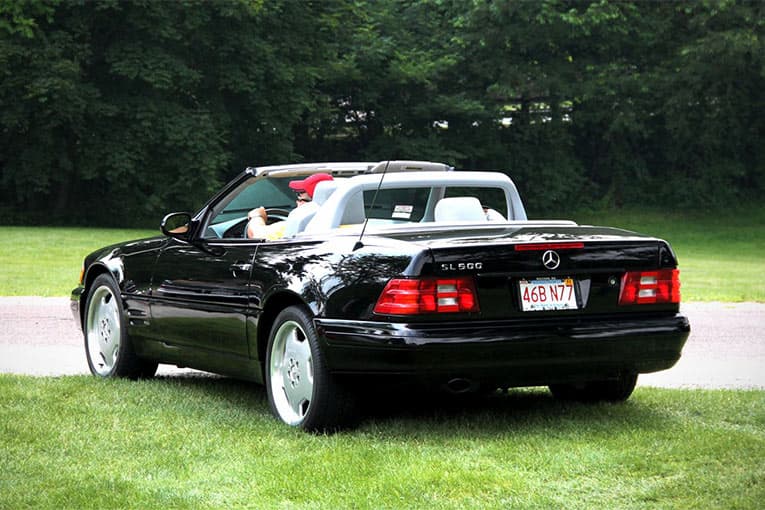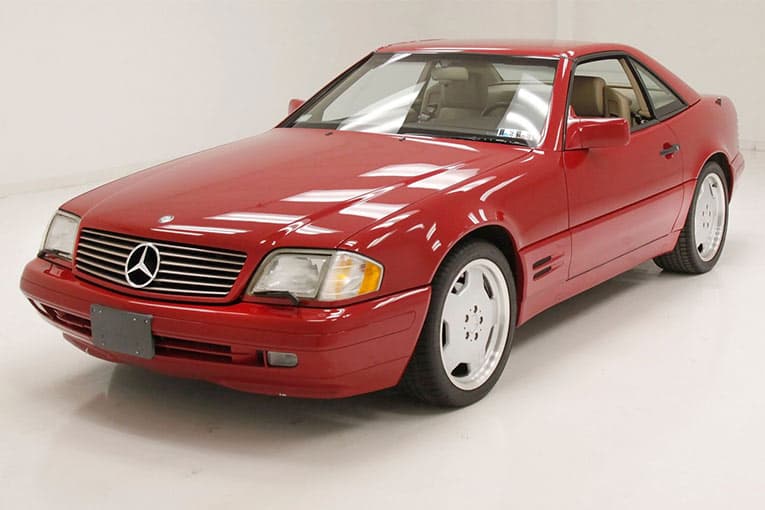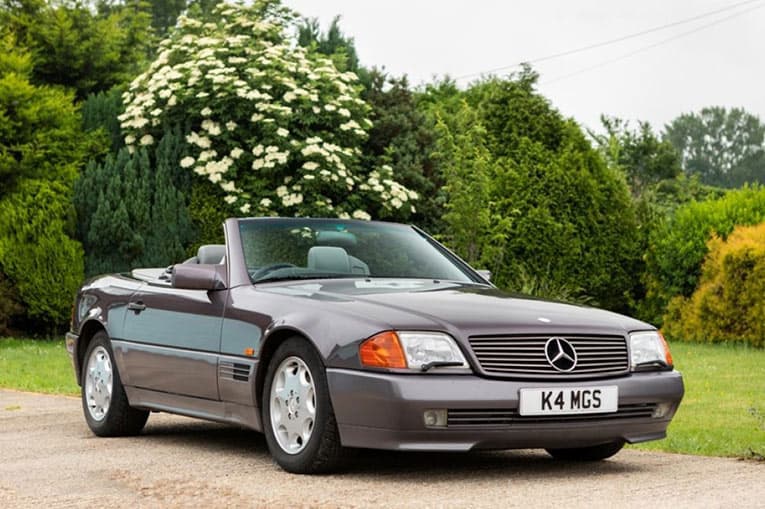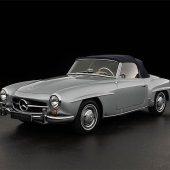Mercedes-Benz caused a stir at the Geneva Motor Show in 1989 by unveiling the new Mercedes-Benz SL. It seamlessly continued the tradition of the Mercedes-Benz SL production sports cars, which had begun with the 300 SL (W 198) and the 190 SL (W 121). For the start of the new roadster in 1989, there were two models with three-litre, six-cylinder inline engines; the 300 SL (140 kW/190 hp) and the 300 SL-24 (170 kW/231 hp), and also the 5.0-litre V8 500 SL model (240 kW/326 hp). The development of a top model with a V12 engine was approved by the company in December 1986.
The development of the R 129 was picked up by Mercedes-Benz in the mid-1970s. There were once again considerations for a coupe derived from an open sports car, such as the 107 model series, but which were not realised. At the start of the 1980s, however, work considerably picked up speed. The model, which was measured in the wind tunnel in November 1981, already has the clear design trademark from the era of Bruno Sacco. On 17 October 1984 the roadster received approval for its shape, and on 10 December 1985 Mercedes-Benz determined that production of the R 129 model series was to begin in August 1988.

New Innovations
The engineers put a lot of development work into the fully automatic soft-top of the R 129 model series. It has sophisticated frame kinematics, and the control unit monitors the processes with 17 limit switches, amongst other things. The draught-stop also premiered in the new SL. Today, this solution is one of the standards for open vehicles. A further feature was the hardtop with a panoramic glass sunroof available in later years.
Early in the development phase, the fathers of the R 129 model series considered a targa solution in which the B-pillar is expanded to a fixed roll bar. This, however, would have disturbed the classic lines of the roadster. Mercedes-Benz found an exceptionally innovative solution: the automatic roll bar. Engineer Karl-Heinz Baumann played a central role in the invention. The preloaded spring-absorber unit erects the roll bar in critical driving situations in just 0.3 seconds.
Facelifts in 1995 and 1998
In 1995 SL got a facelift, which could be recognised on the radiator grille with six louvres, consistently white lighting units at the front, bichromatic rear lamps and new side wall trims. The technical modifications included the new, electronically controlled five-speed automatic transmission in the 500 SL and 600 SL. Mercedes-Benz also presented the new xenon headlamps. The light current of the gas-discharge lamps was double that of conventional halogen bulbs. The facelifted SL premiered the new panoramic glass sunroof made from four panes of different thicknesses, which were bonded to the support structure made from aluminium. It was optionally available from 1996.

In April 1998, Mercedes-Benz presented the again updated SL. The facelift included, amongst other things, new V6 engines in the SL 280 (150 kW/204 hp) and SL 320 (170 kW/231 hp) models as well as a new V8 engine in an SL 500 (225 kW/306 hp). Changes to the exterior included aluminium five-hole wheels, the visible exhaust tailpipe, outside mirrors in a form reminiscent of the SLK R 170 model series as well as door handles and lock cylinders in vehicle colour. On the inside, the new four-spoke steering wheel, display instruments with a chrome frame and the standard nappa leather appointments stood out.
Two AMG versions of the updated SL followed in 1999. The SL 55 AMG received the 5.5-litre V8 engine (260 kW/354 hp) already established in other models. The SL 73 AMG, on the other hand, found a new dimension of performance with its V12 engine and 386 kW (525 hp). A feature of the AMG models, alongside the sporty look, was the mixed-size tyres with aluminium wheels and tyres that were wider at the rear.
Success
The new SL was met with an enthusiastic response and the customers exploited the production capacity available in the Bremen plant right from the start. 52,204 vehicles of the R 129 model series rolled off the production line by December 1991. A total of 25,709 of these sports cars were produced in 1991 alone. More than a third of them were exported to North America; Germany was the second most important market.
In the summer of 1992, Mercedes-Benz presented the new top model: the 600 SL with a V12 engine and an output of 290 kW (394 hp). It was the first SL ever with a twelve-cylinder engine. Its exclusive character was underlined by the interior with burl wood and leather. On the outside, only the model plate and the V12 badge on the air outlet slits indicated the top engine. The reorganisation of the Mercedes-Benz model designations also applied to the SL from July 1993: from then on, the class designation came before the numerical sequence relating to engine size.

Exclusive special models and sportier top models further inspired the success of the R 129 model series in the 1990s. Therefore, from the direct cooperation of Mercedes-Benz with AMG in 1993, the new top model was created: the SL 60 AMG with an output of 280 kW (381 hp). Between 1994 and 2001, a total of 20 special series in various editions were created, which made up between 10 and 1,515 vehicles. The renowned special models included, for example, the Mille Miglia Edition and Special Edition.
The production of the elegant roadster ended in 2001. Over a twelve-year production period, a total of 204,940 vehicles were produced. The most successful model was, with almost 80,000 units, the 500 SL/SL 500 with a four-valve engine. The variety of the roadster was underscored by the stylish customisation options afforded by the designo programme as well as the countless special models.









